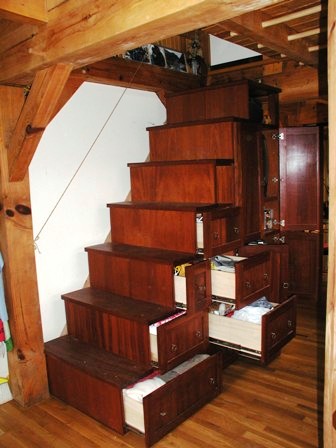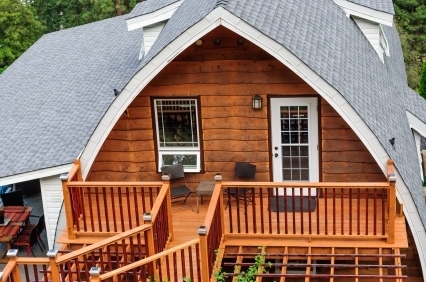Although the size of the average home has nearly doubled in the last half-century, timber frame construction techniques offer abundant design options when designing a small home.
1. Use Open Concept Design
Contemporary construction practices and materials make it possible to design small houses without the walls that often divided older homes into small, boxy rooms. With kitchens, dining areas and living rooms opening into one another, rooms appear larger, and entertaining is more enjoyable.
2. Eliminate Single-Purpose Rooms
A formal dining room used only a few times a year is wasted space in a small home, as is a home office used only for paying bills. Open kitchens accommodate tables of varying sizes for special occasions. A small built-in desk in the kitchen or family room provides sufficient workspace for increasingly compact computers.
3. Incorporate Ample Storage
Clutter makes small houses seem even smaller. Closets should be integrated into the timber frame floor plan without adding unnecessary walls. Easily accessible crawl spaces and attics offer even more storage options.
4. Consider Room Usage
Large bathrooms and bedrooms are unnecessary for families who plan to spend the majority of their time socializing in the kitchen or living room. However, a bedroom intended for multiple occupants should comfortably accommodate a bunk bed

5. Make the Kitchen the Heart of the Home
Kitchens are the hardest working room in any home. They should be easily accessible from other parts of the house and key points outside of the home. Adjoining garages, decks and patios expand the function of the kitchen by offering additional storage and entertaining spaces.
6. Find Lost Space
A laundry closet, as opposed to a full-size laundry room, frees up valuable square footage. An extra row of kitchen cabinets can occupy the space usually devoted to an unnecessary soffit. Eliminating hallways and large foyers, building half-closets over stairwells and adding dormer windows to attics utilizes space that would otherwise go to waste.
7. Select Suitable Windows and Doors
Large windows increase desirable light and air in small spaces. However, windows and doors can interfere with furniture placement in a small home. Consider a room’s purpose when selecting the dimensions and height of windows. Doors should not open into furniture or traffic patterns. Pocket doors and bi-folds are excellent options for cramped quarters.
Thoughtful design creates small timber frame homes that fit perfectly into modern lifestyles. We hope that you will find these seven tips helpful in designing your small home.

My wife and I have always wanted to live in a small cabin one day, so thanks for sharing this. I like your point about making the kitchen the heart of the house. I think we use the kitchen more than any other room, so we’ll definitely consider this for the floorplan.
Very useful tips. I think they would be very helpful for me. Thanks for the great tips.
Thank you for reading!